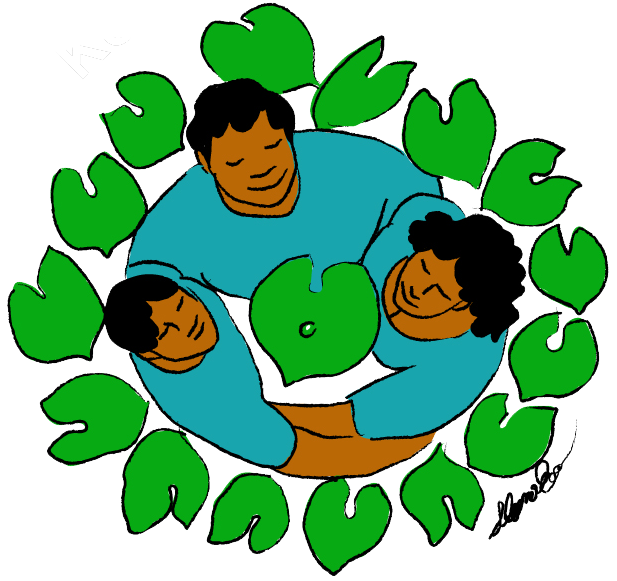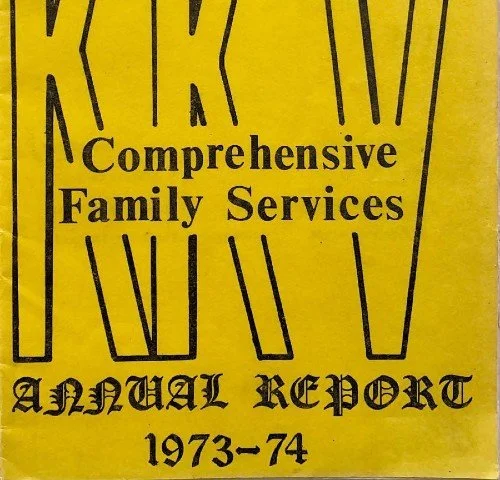Revisiting KKV’s Early Days
Below we reprint the Executive and Community Aides reports from 1973-1974,
KKV’s second year providing services to the Kalihi community.
Executive Report July 1, 1973-June 30, 1974
The dental and medical clinics (two semi-trailers) were completed and opened for service in July, 1973. In addition to the regular general outpatient services provided the following health programs were developed:
· Early and Periodic Screening Diagnosis and Treatment for Department of Social Services recipient children (ages 5-20) – approximately 350.
· Plaque Control Education in Kaewai and Kalihi Uka School – approximately 800 students.
· Ear, Nose and Throat Clinic – Mondays-October.
· Psychological Services provided by Lankila Mental Health Clinic – November.
· Mobile Cancer Breast examination and Pap Smear Clinic (twice).
· VISTA Health Aides – Home visits (one Samoan nurse, one Filipino dentist).
We are indebted to the 80-plus individuals who worked on the clinics; to Doris Austin who volunteered many hours to implement the Plaque Control program; to Drs. Judd, Myers, Doo, Palmer, Carlson for providing medical and dental care; to nurses Hansen, Smith, Hamana, Tyau, Texeira for their unfailing help; to hygienists Palmer and Doernberger for their assistance; financially with the Plaque Control program; and to the Kokua Kalihi Valley community aides whose assistance made the health program possible.
Community Aides Report 1973-1974
In August of 1973, the five community aides of Kokua Kalihi Valley were joined by two VISTA volunteer health aides. This happened at the time the medical and dental clinics were beginning operation. The focus for several months was learning with, sharing, and informing the community about health education and treatment.
Along with a focus on the more specific areas of medical and dental health, the aides continued to respond to those areas of general community health – money management, housing, education, immigrant adjustment.
It became increasingly evident that the aides needed to work closely with individuals offering special services to Kalihi Valley. The aides were joined on a part time basis by two mental health nurses from Lanakila Mental Health Clinic. New relationships with Planned Parenthood were established when one of the community aides from Kokua Kalihi Valley joined that organization to provide better services to Filipino immigrants. The aides began to work closely with the special population, staff person from the American Cancer Society – encouraging Pap smears, breast examinations, and utilization of the Breast Cancer Detection Project. The aides began to work more regularly and closely with the bilingual staff of the Kalihi Palama Immigrant Center. This latter relationship was particularly helpful in making initial contact with the new Korean immigrants in Kalihi Valley Homes. (Kokua Kalihi Valley has no one with the ability to speak Korean.)
The second year, in many ways, was a transition year for the community aides. Late in 1973 the program ran short of funds and two aides were laid off. With the starting of the clinics, many of the services offered by the aides became geographically centralized. A new community aide was added to the staff early in 1974 – a new face who had not shared in the beginning history of Kokua Kalihi Valley. The aides became more believable to the other agencies in the community – the first year of “wait and see” was over. Some of the events that were new and exciting initially tended to become commonplace. A great deal of effort was placed on continuing to seek out those in trouble, in need – not settle back into seeing only those families with whom the aides were familiar.
The Community Aides staff continued to be the backbone of Kokua Kalihi Valley. As one of the volunteer physicians stated, “Without the aides, our services would not be reaching the people.”






